Package Design
Visual Identity in a split second
by Allen Rabinowitz
In today's competitive market place, it's harder than ever to attract a consumer's attention. It's estimated that the average consumer spends less than a second scanning shelves, and in that time, will make a decision on whether or not to purchase any given product.
If you are that product's manufacturer, you want to make sure that in that critical time frame, the consumer will be drawn to your merchandise, have a desire to pick it up, inspect it, and make a decision to buy it. Whether this is a new product, or a reformulation of an existing one, you'll be smart to turn to a package designer to ensure that in that important fraction of a second, your target audience will know your product is there.
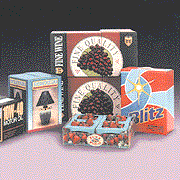 The discipline of package design focuses on producing a container that will get noticed. By skillfully teaming colorful graphics, a unique shape, or any other eye-arresting method, the package designer is a key player in any company's marketing effort. No matter how beneficial the product inside the container may be, unless a consumer decides to pick it up, that product will never get tested.
The discipline of package design focuses on producing a container that will get noticed. By skillfully teaming colorful graphics, a unique shape, or any other eye-arresting method, the package designer is a key player in any company's marketing effort. No matter how beneficial the product inside the container may be, unless a consumer decides to pick it up, that product will never get tested.
"Retailers are not allowing things to remain on the shelves very long unless they sell," explains Marcia Romanuck, Creative Director for The Design Company. "There's a big competition just being allowed to be on the shelves. Because of the competition, you've got to do a lot more to attract someone."
Simply defined, package design is the discipline of creating the container, graphics and visible outer presence of a product a consumer buys at retail or might receive in the mail. This container may range from a simple bottle and label to an elaborate box or system of boxes and inner packaging.
Although graphic designers and others might dabble in it, the three-dimensional nature of package design separates it from other creative disciplines. In addition to the visual element, other considerations such as the material to make the package and the manufacturing capabilities come into play.
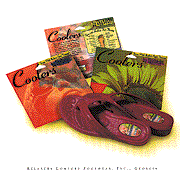 To the uninitiated, the practice of package design may seem to be simple. "Most people think they can do what we do," explains Jon Franz, a principal with AHA! Creative Solutions. "They might have a computer on their desk and some simple software and they think that package design is not that important anyway. As far as I know, no one has ever died of poor package design, but I think some products have failed because of bad package design."
To the uninitiated, the practice of package design may seem to be simple. "Most people think they can do what we do," explains Jon Franz, a principal with AHA! Creative Solutions. "They might have a computer on their desk and some simple software and they think that package design is not that important anyway. As far as I know, no one has ever died of poor package design, but I think some products have failed because of bad package design."
David Green, President of Green Ink, a package design firm, says, "Everybody needs it, but nobody knows they need it until they look at what's available and what we do." Since the package is often the first impression made by a product, Green says that hiring a package designer is, "What you have to do in today's market place to compete with other companies. Our main goal is to make the client's packaging so identifiable that it's immediately recognized by the person in need of the product line."
"The attention to packaging itself has become popular," says Michael Howell, Design Director for MATCH, Inc. "The focus is just as much on the package as it is on the product inside it. Companies are realizing that there's a lot more potential to communicate. In the past, it was just a box to protect a piece of merchandise. Now, it's a communication vehicle that promises an opportunity to not only tell about your product but also what other services you offer and the family of products that work with it."
According to Phil Federspiel, a principal in Group Four Design in Avon, Connecticut and President of the Brand Design Association, the trade group representing package designers, most shoppers "scan and snatch" goods off store shelves rather than read anything.
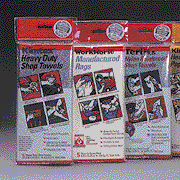 "They don't dwell on it," Federspiel explains. "They know what they're looking for, and they want to find it, get it in their cart and move on. With few exceptions, people don't do comparison shopping at point of sale on a consumer product. Whatever product the consumer desires, they tend to buy the brand they recognize in the size that meets their consumption requirements. If the price is acceptable and those two requirements are met, it's a done deal. The ability to quickly recognize your brand and find it is an important issue."
"They don't dwell on it," Federspiel explains. "They know what they're looking for, and they want to find it, get it in their cart and move on. With few exceptions, people don't do comparison shopping at point of sale on a consumer product. Whatever product the consumer desires, they tend to buy the brand they recognize in the size that meets their consumption requirements. If the price is acceptable and those two requirements are met, it's a done deal. The ability to quickly recognize your brand and find it is an important issue."
Although the discipline should be easily understandable, there's more to package design than initially meets the eye. Says Steve Martin, a partner in Young & Martin Design, in defining package design, "It's an extension of the company's marketing strategy. It's a wonderful opportunity to get your message out."
While there is an esthetic element involved, package design is first and foremost an important component in creating sales. "An effective packaging design that is appropriate and targeted will generate sales," says Frank Golley, a principal in CokerGolley Design, who has designed packing for such companies as Coca-Cola, ConAgra Poultry, Flowers Industries, and Georgia Pacific. "Repeat sales and follow-up business require the product inside the package to meet the expectations that the package sets up. Whatever communication the product sets up with the consumer, it has to follow through and the product has to match that visual representation."
Tom Antista, a principal in Antista Fairclough Design, calls his discipline, "a great area of design to work in. It requires more than just design skills. What you're designing is really only a small piece of a bigger process."
Indeed, there's more to package design than creating an interesting looking box. "Good packaging doesn't end up that way by accident," says Antista, whose client list includes Anheuser Busch, Coca-Cola, Fetzer Vineyards, and Wolfgang PuckFood Co. "What's behind good packaging is usually a lot of research that goes into who is buying the product, which creates a lot of information about the container."
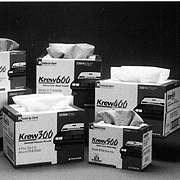 "We don't exist without marketing," states Golley. "That drives the need for designers. "Without [marketing departments], we would be artists and have no marketing viability."
"We don't exist without marketing," states Golley. "That drives the need for designers. "Without [marketing departments], we would be artists and have no marketing viability."
When a package designer is hired for a job, they usually receive a "design brief" from the client which provides basic information about the product, its target audience,' and its uses; as well as such container-specific information as the volume it needs to hold and how it will be packed and displayed. Budget information will also provide the designer with parameters needed to determine the necessary materials and manufacturing process for the package.
"We then look at developing imagery," says Antista. "We look at developing color schemes that work within the category that aren't so outside the category that it would alienate the target audience." From there, the design will go to focus groups to gauge the reaction of the market, and be subjected to quantitative and qualitative analysis before the design is approved.
The skills required for package design go beyond a good sense of design. To do a proper job, a package designer needs to combine the knowledge of a structural engineer with the esthetic sense of a graphic designer.
"Packaging design is not just about looking good," states Golley. "It is technically oriented and requires a fairly in-depth knowledge of printing and production. Printing for packaging has some very specific limitations, and you need to understand the production process. There are very specific constraints, and we design for them and integrate them into the whole process. When the consumer is holding a product, it needs to be the exact same visual representation the marketing decision was based on in the beginning."
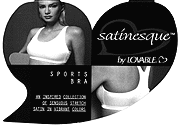 The time at which a designer is brought into a project varies from situation to situation. Usually, package designers are brought in for a new product as soon as the marketing department hatches the idea and a presentation vehicle is needed. A design firm will be called in to create a 3-D form factor using either stock containers, a custom container, or a combination of custom and stock. Then, proprietary graphics and labeling are placed on the container to differentiate it from other products.
The time at which a designer is brought into a project varies from situation to situation. Usually, package designers are brought in for a new product as soon as the marketing department hatches the idea and a presentation vehicle is needed. A design firm will be called in to create a 3-D form factor using either stock containers, a custom container, or a combination of custom and stock. Then, proprietary graphics and labeling are placed on the container to differentiate it from other products.
"It depends on the sophistication of the client," says Antista. "The larger, mainstream clients usually do a fair amount of research in terms of a market niche and opportunity niche first."
"With some clients," explains Romanuck, "we're brought on even before the product is made. In one case, we were brought on early in the early marketing stage, and we consulted with them in terms of product color. At times, we've been involved in product naming. The ideal situation is where we are involved with something from the very beginning and brainstorm in terms of the shape of package, what materials make sense and have input both technically and economically on the best kind of container for something. I think it's important that we're involved in a project from start to finish and have control over it."
Golley agrees that it's beneficial if the designer is involved in a project from the early stages. "We can take a creative brief of a desire," he explains, "and turn that into visual representations. When we've gotten involved later in a project, the problem was that we were working with a set of preconceived notions people had about certain things. These were things that were not appropriate and we had to go through an effort to evaluate them. When we're involved early on, we can give a full range of ideas."
Describing the design process as linear and experimental, Golley says he experiments with a number of options to get a set of solutions. "We use that process, which is very different from the graphic design industry," he explains. "When we present to a client, we have a linear progression of concepts from very close in. It may be 20 or 30 steps until there is a design solution - which is way beyond where the client wants to be or may be too avant garde for their market. This process allows us to explain why we've taken each step."
 It's essential for both Golley and his clients to take themselves out of the equation in coming up with a package concept. "Typically, I am not the target consumer for a product, nor is the person purchasing design," he explains. "You have to show them visually who the target audience is, explain to them why each design solution is appropriate for that audience. When you actually have a solution, it's appropriate to the consumer and not me or the brand manager."
It's essential for both Golley and his clients to take themselves out of the equation in coming up with a package concept. "Typically, I am not the target consumer for a product, nor is the person purchasing design," he explains. "You have to show them visually who the target audience is, explain to them why each design solution is appropriate for that audience. When you actually have a solution, it's appropriate to the consumer and not me or the brand manager."
Howell says that very often, he uses a client's ideas as a starting point. "Clients have an idea of what they want or what they'd like to see," he explains. "It's one thing to present that and obtain their goals. But, we try to take that idea steps farther, to push that and give the client what they want and what they need. Packaging offers a way to do that. You're not limited by a single flap or side, you have areas you can cover."
In some cases, clients will try to impose their ideas on the project, and this might lead to negative consequences. Franz says he once had to deal with such a client.
"He dictated the design to us," Franz recalls. "We were thinking that a client is a client and we'll give him what he wants, but we also thought, 'Why are you coming to us if you know exactly what you want?' If we're doing our job well, we help to lead the client into a better place. Some of them come in with their ideas fixed in stone or with monetary restrictions on what they want to do that don't allow us to explore too much with them."
Fortunately, Franz's experience is not a common one. "Usually, the client doesn't have a lot of time and doesn't have the detailed knowledge of production that we do," Green explains. "In order not to disturb the integrity of the package, we strongly recommend that we supervise the job all the way through production."
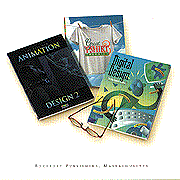 The packaging icon that many package designers strive to emulate is the Coca-Cola bottle. The contour shape of the Coke bottle is recognized world-wide. Wherever you go on the globe, that familiar shape and color instantly signify the product it contains and define the expectations of the consumer.
The packaging icon that many package designers strive to emulate is the Coca-Cola bottle. The contour shape of the Coke bottle is recognized world-wide. Wherever you go on the globe, that familiar shape and color instantly signify the product it contains and define the expectations of the consumer.
"That's the highest level one would hope to attain," says Howell. "Not only has it become a universally recognized symbol, but the package has become the vehicle that identifies the company. The focus is just as much on the package as it is on the product inside the package."
Franz also says that the Coke bottle is, "The tip of the iceberg in terms of successful packaging. You can project that silhouette on a wall with no writing at all and people will say 'That's a Coke bottle.' That's package design combined with brilliant marketing and advertising."
First introduced in 1915, the contour bottle is credited to Alexander Samuelson of the Root Glass Company in Indiana, who developed it in 1913. Prior to the contour bottle, Coca-Cola, like other beverages of the day, came in a variety of containers, depending on the bottler.
The contour bottle was "introduced to give a distinct package to a distinct product," explains Tony Tortorici, Manager of Archival Programs for The Coca-Cola Company "The design was developed so that someone could reach into a bucket full of ice and pick up a bottle and know it was Coca-Cola without looking at it."
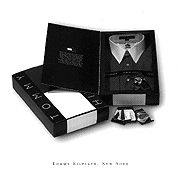 Both the shape of the bottle and the color of the glass, called "Georgia green," are trademarks. After World War II, the contour bottle was adopted worldwide, and in 1950 Time magazine placed the bottle on its cover, the first time a trademark was so honored.
Both the shape of the bottle and the color of the glass, called "Georgia green," are trademarks. After World War II, the contour bottle was adopted worldwide, and in 1950 Time magazine placed the bottle on its cover, the first time a trademark was so honored.
In recent years, The Coca-Cola Company has utilized the bottle's familiar shape in new ways. In the 1980's, a plastic version of the contour was introduced, and in the '90s, the bottle was used on cans as a graphic symbol. "We want to continue the rich heritage of the glass bottle," Tortorici explains. A contour can is in the test stage, but Tortorici adds, "The method to produce that can has overshadowed the ability to deliver it to the consumer at a reasonable price."
"Coca-Cola is playing off the equity of that symbol in the consumer's mind," says Antista. "It's familiar, and there's a lot of things built into that icon, which is why they exploit it."
Like Coca-Cola, the shape of the Absolut Vodka bottle has transcended packaging and become an easily recognizable symbol that helps identify the product. In an increasingly global market place, package designers are finding that their work is having to take on a similar role.
When a product goes global, package designers are faced with a new set of parameters. Not only might the product be sold in a place where English is not spoken, but more than likely, the western alphabet is not used either. Colors, symbols, and other cultural clues are not similar as well. In these cases, the packaging has to work overtime in informing the potential customer about what it contains.
 Golley says that going global means, "You've got to do a lot more homework. You've got to work a lot more on a local basis in that environment to design packaging that's appropriate and communicates to the consumer what's inside that packaging. You need to communicate the quality attributes and the correct attributes about the company selling the product."
Golley says that going global means, "You've got to do a lot more homework. You've got to work a lot more on a local basis in that environment to design packaging that's appropriate and communicates to the consumer what's inside that packaging. You need to communicate the quality attributes and the correct attributes about the company selling the product."
Like Coca-Cola or Absolut, in an international setting, the container needs to define the brand. "I would urge any client to think very strongly about a cohesive branding effort," says Martin. "Branding is the name of the game, and you certainly want to brand a product with its package."
Although New York and San Francisco remain the preeminent centers for package design, local designers say that Atlanta-based package design firms are getting recognition both locally and nationally. In fact, Antista says the bulk of his business comes from outside the region.
Romanuck says that opinions have changed since her company moved into Atlanta from Boston six years ago. "It's still a bit of a struggle," she explains, "and we deal with a lot of people who don't think of Atlanta design firms the way they do with New York or San Francisco firms, but that's changed. They still may be looking at New York and San Francisco, but they're looking at Atlanta too, as a market where they can find package design services."
From wherever the design work comes, companies are more aware of the need to have the right sort of packaging to make a visual impact in the fraction of a second the consumer's eye picks their product on a shelf. In this critical instant, the success or failure of the product rests on the skill, knowledge, and talent of the package designer.
"The larger percentage of products that are being packaged and put out there for the first time don't succeed," says Franz. "A large percentage make a splash and fade away. Anyone who has been in the industry a while knows that the package can either sink the product, or make it fly."
 The discipline of package design focuses on producing a container that will get noticed. By skillfully teaming colorful graphics, a unique shape, or any other eye-arresting method, the package designer is a key player in any company's marketing effort. No matter how beneficial the product inside the container may be, unless a consumer decides to pick it up, that product will never get tested.
The discipline of package design focuses on producing a container that will get noticed. By skillfully teaming colorful graphics, a unique shape, or any other eye-arresting method, the package designer is a key player in any company's marketing effort. No matter how beneficial the product inside the container may be, unless a consumer decides to pick it up, that product will never get tested. To the uninitiated, the practice of package design may seem to be simple. "Most people think they can do what we do," explains Jon Franz, a principal with AHA! Creative Solutions. "They might have a computer on their desk and some simple software and they think that package design is not that important anyway. As far as I know, no one has ever died of poor package design, but I think some products have failed because of bad package design."
To the uninitiated, the practice of package design may seem to be simple. "Most people think they can do what we do," explains Jon Franz, a principal with AHA! Creative Solutions. "They might have a computer on their desk and some simple software and they think that package design is not that important anyway. As far as I know, no one has ever died of poor package design, but I think some products have failed because of bad package design." "They don't dwell on it," Federspiel explains. "They know what they're looking for, and they want to find it, get it in their cart and move on. With few exceptions, people don't do comparison shopping at point of sale on a consumer product. Whatever product the consumer desires, they tend to buy the brand they recognize in the size that meets their consumption requirements. If the price is acceptable and those two requirements are met, it's a done deal. The ability to quickly recognize your brand and find it is an important issue."
"They don't dwell on it," Federspiel explains. "They know what they're looking for, and they want to find it, get it in their cart and move on. With few exceptions, people don't do comparison shopping at point of sale on a consumer product. Whatever product the consumer desires, they tend to buy the brand they recognize in the size that meets their consumption requirements. If the price is acceptable and those two requirements are met, it's a done deal. The ability to quickly recognize your brand and find it is an important issue."  "We don't exist without marketing," states Golley. "That drives the need for designers. "Without [marketing departments], we would be artists and have no marketing viability."
"We don't exist without marketing," states Golley. "That drives the need for designers. "Without [marketing departments], we would be artists and have no marketing viability." The time at which a designer is brought into a project varies from situation to situation. Usually, package designers are brought in for a new product as soon as the marketing department hatches the idea and a presentation vehicle is needed. A design firm will be called in to create a 3-D form factor using either stock containers, a custom container, or a combination of custom and stock. Then, proprietary graphics and labeling are placed on the container to differentiate it from other products.
The time at which a designer is brought into a project varies from situation to situation. Usually, package designers are brought in for a new product as soon as the marketing department hatches the idea and a presentation vehicle is needed. A design firm will be called in to create a 3-D form factor using either stock containers, a custom container, or a combination of custom and stock. Then, proprietary graphics and labeling are placed on the container to differentiate it from other products. It's essential for both Golley and his clients to take themselves out of the equation in coming up with a package concept. "Typically, I am not the target consumer for a product, nor is the person purchasing design," he explains. "You have to show them visually who the target audience is, explain to them why each design solution is appropriate for that audience. When you actually have a solution, it's appropriate to the consumer and not me or the brand manager."
It's essential for both Golley and his clients to take themselves out of the equation in coming up with a package concept. "Typically, I am not the target consumer for a product, nor is the person purchasing design," he explains. "You have to show them visually who the target audience is, explain to them why each design solution is appropriate for that audience. When you actually have a solution, it's appropriate to the consumer and not me or the brand manager." The packaging icon that many package designers strive to emulate is the Coca-Cola bottle. The contour shape of the Coke bottle is recognized world-wide. Wherever you go on the globe, that familiar shape and color instantly signify the product it contains and define the expectations of the consumer.
The packaging icon that many package designers strive to emulate is the Coca-Cola bottle. The contour shape of the Coke bottle is recognized world-wide. Wherever you go on the globe, that familiar shape and color instantly signify the product it contains and define the expectations of the consumer. Both the shape of the bottle and the color of the glass, called "Georgia green," are trademarks. After World War II, the contour bottle was adopted worldwide, and in 1950 Time magazine placed the bottle on its cover, the first time a trademark was so honored.
Both the shape of the bottle and the color of the glass, called "Georgia green," are trademarks. After World War II, the contour bottle was adopted worldwide, and in 1950 Time magazine placed the bottle on its cover, the first time a trademark was so honored. Golley says that going global means, "You've got to do a lot more homework. You've got to work a lot more on a local basis in that environment to design packaging that's appropriate and communicates to the consumer what's inside that packaging. You need to communicate the quality attributes and the correct attributes about the company selling the product."
Golley says that going global means, "You've got to do a lot more homework. You've got to work a lot more on a local basis in that environment to design packaging that's appropriate and communicates to the consumer what's inside that packaging. You need to communicate the quality attributes and the correct attributes about the company selling the product."